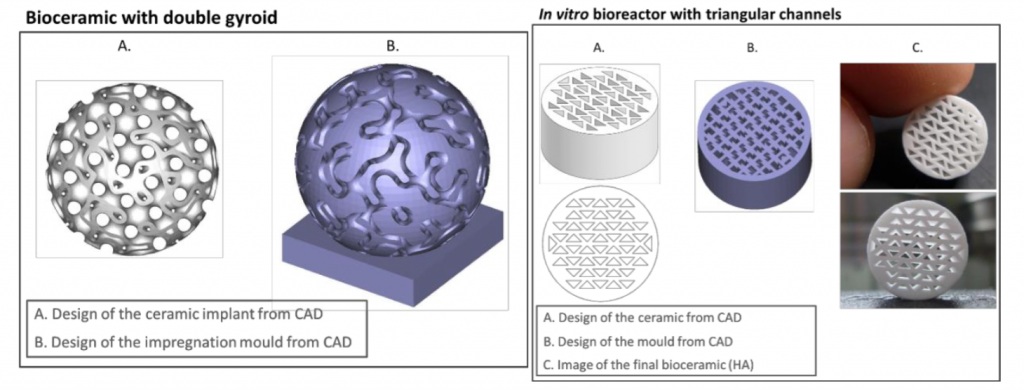High-performance ceramics are seen as the next frontier for industrial rapid prototyping, some manufacturing and also, as we have begun to see recently, for biofabrication and 3D bioprinting. Biocerawax, a new AM process which is being presented by French 3D printer distributor Multistation, focuses on this latest aspect by introducing a new method for low-cost, bioceramic 3D printing based on Solidscape’s DoD (Drop on Demand) high-res, wax-based AM process.
There are a few ways to go about high-resolution ceramics 3D printing and most of them are based on the stereolithographic process. For example Lithoz’s LCM technology , or 3DCeram‘s and Prodways DLP-based ceramics manufacturing. Developed by the EMSE (Ecole des Mines de Saint-Etienne, France), the process introduced by Multistation produces complex and lattice architectures by the impregnation of lost patterns manufactured with Solidscape machines.
In other words the “negative of the structure” is produced in wax and then filled with ceramics. The wax is then melted away during post processing in a kiln, while the ceramics sinters together. The process is not entirely different from Lithoz’s and 3DCeram’s, other than the fact that it uses wax instead of resins and thus reduces costs while possibly requiring a more extensive post-processing of the part.
Until now, bioceramics, such as calcium phosphates (CaP), have been mainly produced with traditional ceramic processes (which – as Multistation points out, incluode porogen leaching, phase separation, gas foaming, replication of PMMA template, bone machining). These conventional methods, the company explains, suffer from architectural limitations, internal inhomogeneity and sample-to-sample variations. This lack of architectural standardization prevents the rigorous design of biological experiments, as well as their reproducibility.
One possible alternative would be the implementation of new engineering developments combining computational methods and additive manufacturing (AM) technologies, like SLA (as in the above mentioned cases) or even SLM. These processes are able to overcome such geometrical and reproducibility limitations by providing a higher level of control over the design. However laser beam technologies, along with much higher costs, still present major drawbacks such as lack of flexibility from one bioceramic phase composition to another, changes in the chemical and phase compositions (especially for CaP), and also post-processing issues which include the removal of raw materials and supports).
On the other hands, as Dr David Marchat of EMSE explained, the Biocerawax process can address most of these issues by ensuring the preservation of phase biocompatibility (not inducing phase modification and not leaving toxic residue), as well as by precisely reproducing manufacturing of a wide panel of custom architectures (e.g. up to only 5 µm wide and high cusps for channels of 150µm). Finally they are considerably more affordable than laser beam or e-beam powered technologies.
Some of the models made in calcium phosphate, hydroxyapatite Ca10(PO4)6(OH)2 are being presented by Multistation at the formnext show in Frankfurt, from the 17th to the 20the November 2015, at Hall 3-1 booth G89. 3DPI, of course, is going to be there to bring you all the details.



